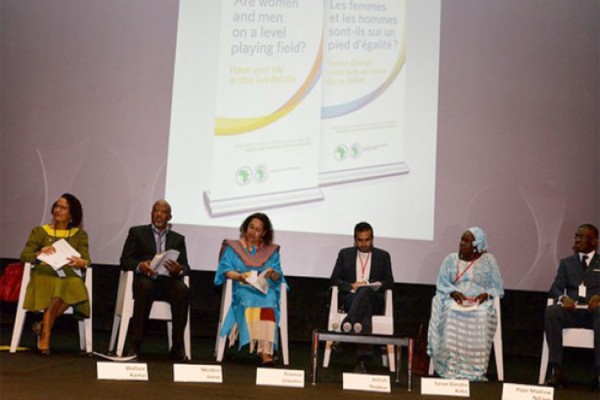By EMILY CADEI, OZY
If you were asked to name countries where women vastly outnumber men in higher education, somewhere in the ultra-traditional Arab world would probably not be your first guess. And yet, in tiny Qatar, the oil-rich peninsula jutting off Saudi Arabia into the Persian Gulf, nearly seven times as many women as men are enrolled in university, one of the highest rates on the planet, according to the most recent figures compiled by the World Bank.
In fact, Maysa Jalbout, a fellow at the Brookings Institution’s Center for Universal Education, calculated recently that across the Arab world, women slightly outnumber men in tertiary education, with a female-to-male enrollment ration of 108 percent.
Surprisingly, it’s not a brand-new trend. Paolo Verme, a World Bank expert on the Middle East and North Africa, tells OZY that women there have made “huge gains” in the last decade or so in obtaining secondary and tertiary education. Fertility rates have also gone down rapidly across the region in the 21st century. And GDP growth has been on the rise. These are all prerequisites for women entering the workplace, at least based on what economists have found from studying other countries that now have high levels of female employment. So if all of this is happening in Arab countries, why are there still so few women working there?
As Jalbout points out, “Three out of four Arab women remain outside the labor force” — the lowest in the world. That’s true whether they’re college graduates or relatively uneducated. In fact, Verme and two colleagues found that in Morocco, the likelihood of women having a job went down with a high school-level education. He thinks there are a couple different factors at play.
The first is economic — the economies in the region may be growing, but not in the sectors most likely to employ women, like services and light manufacturing. And then there are the social norms. Verme has found that women in the region may get jobs early on, but exit the labor force en masse around the age of 25, aka average marriage age, regardless of whether or not they have children then. Family structures, still quite traditional, have a lot to do with it, says Mayyada Abu-Jaber, founder of the Jordan-based education NGO The World of Letters. In her work conducting youth employment-training programs, she found that more than half of female participants would decline the jobs offered upon completion. Deciding to work was a “collective decision of the family,” she found, and most families decide the vocational job opportunities “are not desirable for women.”
And while norms have shifted when it comes to the value of educating girls, they’ve not yet hit the women’s lib end of the spectrum. Education, notes Abu-Jabber, is now “very important for women” in Jordan, but not as a “transition for the workplace as much as it is becoming more desirable for marriage.” That helps explain why women with secondary education are less likely to work — they’re more likely to marry an educated man with a job that can support them both.
Verme cautions against concluding this all goes back to Muslim society. Look at the high female employment in places like Indonesia or Malaysia, which are majority Muslim. She says gender norms and social structure issues are important to the extent that the economy is weak. “I’m convinced if a country like Morocco was really able to compete in light manufacturing globally, all these other constraints would progressively disappear.”




